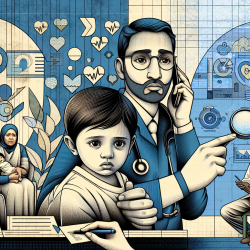Introduction
In the heart of the Peruvian Amazon, where dense forests and winding rivers create a natural barrier to modern healthcare, the potential of biomedical technologies to transform access to health services is immense. However, the journey to successful implementation is fraught with challenges that require innovative thinking and collaborative efforts. The research article "Challenges of design, implementation, acceptability, and potential for, biomedical technologies in the Peruvian Amazon" offers valuable insights into these challenges and provides a roadmap for practitioners looking to make a meaningful impact.
Understanding the Challenges
The study identifies three core themes that encapsulate the hurdles faced by researchers and practitioners in the Amazon: design, implementation, and acceptability. Each of these areas presents unique obstacles that must be navigated to ensure the successful deployment of biomedical technologies.
- Design: Technologies often fail to consider the local context, leading to issues such as equipment malfunction due to environmental factors like humidity and flooding. Practitioners must prioritize context-specific designs that are adaptable to the Amazon's unique conditions.
- Implementation: Transporting technologies through the Amazon is a logistical challenge. Practitioners need to plan for difficult terrain and seasonal changes that affect accessibility. Additionally, the lack of infrastructure, such as electricity and trained personnel, can hinder the effective use of technology.
- Acceptability: Cultural factors play a significant role in the acceptance of new technologies. Practitioners must engage with local communities to understand their needs and concerns, ensuring that interventions are respectful of cultural practices and perceived benefits.
Strategies for Success
To overcome these challenges, the study recommends a collaborative approach that involves local communities in the design and implementation process. This includes:
- Co-Design: Engage with local stakeholders to develop technologies that meet their specific needs and preferences. This participatory approach can enhance the relevance and acceptability of interventions.
- Capacity Building: Invest in training local health workers and community members to use and maintain biomedical technologies. This not only ensures sustainability but also empowers communities to take charge of their health outcomes.
- Cultural Competence: Develop cultural competence among practitioners to navigate the complexities of working in diverse settings. Understanding local customs, languages, and health beliefs is crucial for building trust and fostering collaboration.
Encouraging Further Research
While the study provides a comprehensive overview of the challenges and potential solutions, it also highlights the need for further research to explore innovative approaches and technologies that can bridge the healthcare gap in remote areas. Practitioners are encouraged to contribute to this growing body of knowledge by sharing their experiences and insights.
Conclusion
Biomedical technologies hold the promise of revolutionizing healthcare access in the Peruvian Amazon, but their success depends on a nuanced understanding of the local context and a commitment to collaborative problem-solving. By embracing the recommendations from this study, practitioners can enhance their skills and contribute to meaningful change in these communities.
To read the original research paper, please follow this link: Challenges of design, implementation, acceptability, and potential for, biomedical technologies in the Peruvian Amazon.










